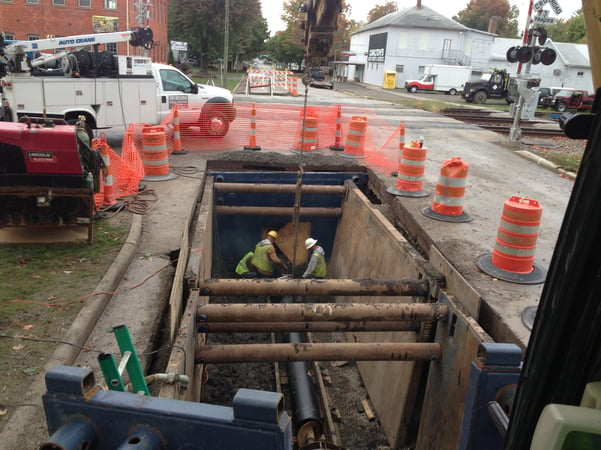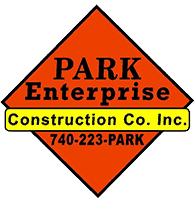
Underground utilities don’t just magically appear underground. There are several different digging methods to place underground pipes, each ideal for a specific situation.
Generally, pipe installation either requires open cutting (or trenching) from the surface or directional boring (lateral tunneling). For good measure, we’re throwing in a third option, jack and bore, which can open larger spaces and long distances underground in special circumstances.
Which one is the best utility digging method? Well, that depends on surrounding buildings and infrastructure, as well as the general lay of the land. Here’s a breakdown.
Which Underground Utility Digging Option Works Best for My Situation?
Your options for digging and laying underground utilities vary in terms of surface impact.
1. Open Cutting
This can be the most economical choice - if there’s a good amount of open space available at your property. Open cutting, or trenching, requires digging from the surface down to a certain depth required for drainage sewer, sanitary sewer, or water line in your area.
Open cutting is ideal when there are no buildings, driving surfaces, or other infrastructure nearby that could be impacted.
Basically, your contractor can excavate, or trench, straight lines and any necessary angles to create a perfect underground pipe path. Once that’s complete, crews should lay a base of easily compactible construction aggregate to protect and support the pipe system. After laying the pipe, your contractor must refill the trench with dirt and make all necessary efforts to restore the landscape to its original appearance.
2. Directional Boring
Sometimes space is limited and other buildings and infrastructure nearby make it impossible, unfeasible, or impractical to dig from the surface. For instance, you may have an asphalt driveway or other driving surface standing in the path of a new utility line.
Pop quiz: What are your options?
a.) Go around it
b.) Go over it
c.) Tunnel under it
d.) Attend an Ohio State football game
Correct answer: Both C and D. Joking aside, directional boring (also called drilling or tunneling) is the best option that isn’t invasive on the surface. The alternative method of open cutting from above would require destroying the existing infrastructure and then rebuilding it. If that involves laying a new asphalt or concrete driving surface, the costs could add up quickly.
Your contractor should use a boring rig to open a tunnel under the obstruction, where construction crews would then install a carrier plastic or steel carrier pipe as a conduit for the actual water or sewer line.
3. Jack and Bore
This option is a heavy-duty version of directional boring. It requires a much larger machine on rails to drill a wider or longer tunnel on a perfectly straight line.
The jack and bore method is best if you have a large roadway, major highway, or other large structures standing in the way. In this process, the contractor:
- Digs large pits on both sides of the obstruction
- Drills underneath
- Jacks the casing for extra support
Admittedly, this can be the most expensive digging method. But in such situations, bearing the upfront cost is minimal compared to the peace of mind associated with a sturdy underground utility infrastructure.
Open Cut, Directional Bore, or Jack and Bore: Making the Right Choice
At times, the right choice is obvious when digging for underground utilities. Other times, you may have to plan routes around (or rather, below) nearby obstacles - and consider your budget. In any case, work with your contractor to develop a plan to:
- Install the pipe
- Replace or remove excess dirt
- Restore the land to its original condition
If necessary, the scope of your project and budget should include transporting materials for safe and legal disposal. Keep in mind the rules and regulations for underground utilities in your area. As always, your contractor should call OUPS (the Ohio Utilities Protection Service) before digging to protect your property and existing utility infrastructure from damage.



